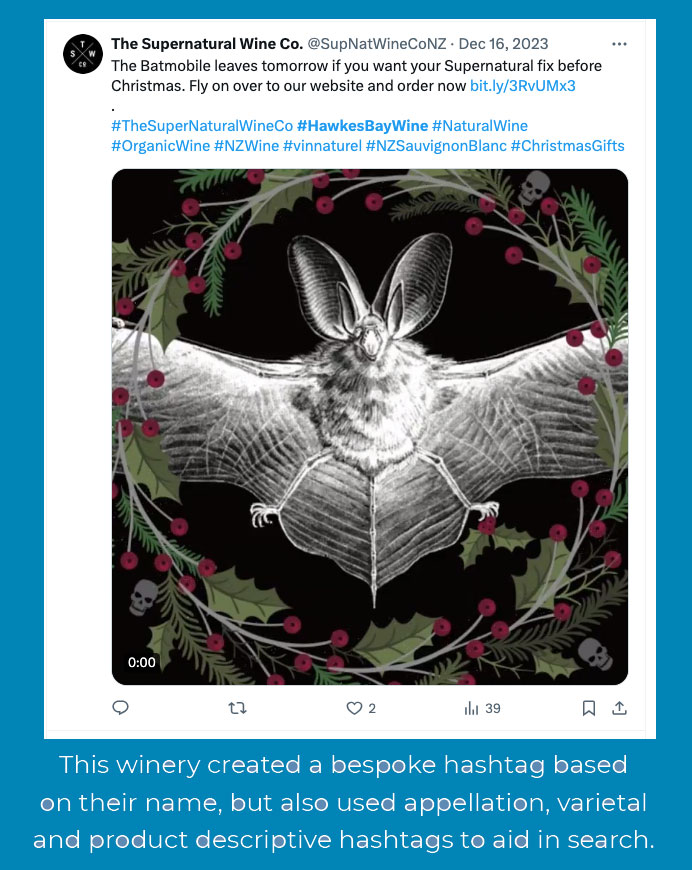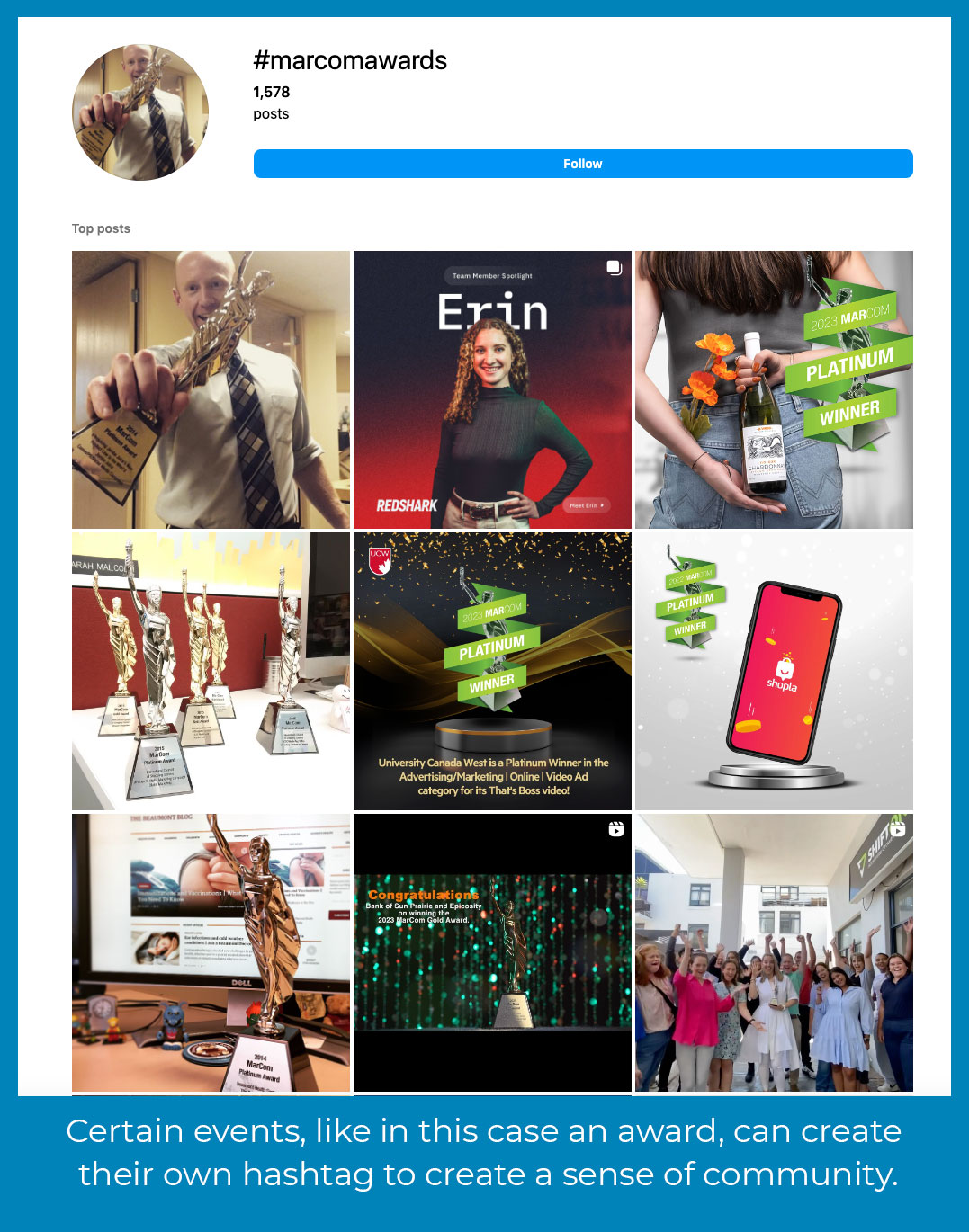
#Hashtag Handbook
Spruce up your feed with
these simple techniques
Hashtags, once dismissed as mere digital decoration, have evolved into indispensable tools for social media optimization. Understanding their significance entails recognizing their role as navigational aids for users seeking specific content within the vast expanse of social media platforms. In this blog post, we delve into the strategic implementation of hashtags, delineating their capacity to amplify visibility or, conversely, engender confusion.
The Purpose of Hashtags:
At their core, hashtags serve as categorical signposts, facilitating content discovery and audience engagement. By affixing relevant hashtags to posts, content creators align their material with thematic threads, thereby enhancing a post’s discoverability to interested audiences. But they do warrant thought, as inadequate or misapplied hashtags may obfuscate content, diminishing visibility within the digital noise.

Research and Selection of Hashtags:
Effective hashtag utilization necessitates meticulous selection, informed by data-driven insights into popular trends and user behaviors. Various analytical tools, such as RiteTag and Hashtagify, provide empirical data on hashtag performance, guiding the identification of optimal tags for maximal impact. Moreover, platforms’ native search functionalities enable real-time exploration of trending hashtags, affording opportunities for timely integration into content strategies.
1. Insert Topics:
To use these tools first input relevant keywords or phrases about your post topic to initiate the hashtag discovery process. These keywords should align with the thematic focus of your content or target audience interests.
2. Analyze Results:
Review the generated results, which typically include a list of related hashtags accompanied by metrics such as popularity, reach, and recent usage trends. This data empowers users to make informed decisions regarding hashtag selection based on their specific objectives. But beware, they throw everything at you so cull the list and make thoughtful suggestions.

3. Refinement and Selection:
Refine your search parameters as needed to narrow down the list of hashtags to those most aligned with your content strategy. Pay close attention to metrics such as engagement rates and audience demographics to ensure optimal resonance with your target audience.
4. Integration into Content Strategy:
Integrate the selected hashtags into your content strategy across relevant social media platforms. Deploy them strategically within posts to maximize visibility and engagement while avoiding overuse or irrelevance.
While most platforms offer free versions with limited features, users seeking comprehensive analytics and enhanced functionality may opt for premium subscription plans. Ultimately, the investment in these tools can yield significant returns in terms of optimized content performance and increased audience engagement across social media channels.
It’s important to note that pricing for these tools may vary based on factors such as the number of users, the scope of features, and the level of customization required. Additionally, some providers may offer free trials or custom pricing options based on specific business needs. Before making a decision, it’s advisable to thoroughly evaluate each option’s features, pricing, and suitability for your organization’s social media marketing objectives.
Creation of Custom Hashtags:
In instances where pre-existing hashtags prove inadequate, the creation of bespoke tags offers a personal notation tailored to your specific content or branding objectives. Custom hashtags not only foster brand identity but also engender community engagement, providing followers with a unifying thread through which to participate in discourse or user-generated content initiatives.
They can be used to add humor or personality to your posts:
“Just spent an hour trying to teach my cat to fetch. Needless to say, he’s not quite ready for the Olympics. 🐱 #FetchFail #GoldMedalForEffort”
Or they can be used effectively to create a community
around an event or marketing effort:

Platform-Specific Strategies:
Effective hashtag strategies are contingent upon nuanced adaptation to the idiosyncrasies of each social media platform. Herein lies a breakdown of platform-specific guidelines:
Google Posts: Conciseness reigns supreme in Google’s search-oriented ecosystem. Limit hashtag usage to 1-3 relevant tags per post to optimize searchability without diluting content relevance.
Twitter (X) Tweets: Given Twitter’s character constraints, restraint is advised, with 1-2 hashtags per tweet maintaining readability while capitalizing on trending topics to enhance discoverability.
Facebook Feeds: Although less hashtag-centric, Facebook accommodates 1-2 relevant hashtags per post, with strategic placement facilitating content visibility amidst algorithmic complexities.
Instagram Instants: Hashtag abundance finds favor on Instagram, where 5-10 carefully curated tags per post amplify content reach and engagement, with discreet placement in comments preserving aesthetic integrity. You can add up to 30 if you must, although most agree that is excessive.
Pinterest Pins: Striking a balance between specificity and brevity, 2-4 descriptive hashtags per pin enhance content discoverability within Pinterest’s visually-driven ecosystem.
Reddit Threads: Subtlety is paramount on Reddit, where overtly promotional hashtags risk alienating users. Limit hashtags to 1-2 per post, prioritizing relevance to foster organic engagement within community discussions.
Conclusion:
Hashtags represent a double-edged sword in the realm of social media optimization, capable of elevating content visibility or miring it in obscurity. By adhering to strategic principles informed by data-driven insights and platform-specific nuances, content creators can harness the transformative potential of hashtags to amplify audience reach, foster community engagement, and cultivate digital influence in an ever-expanding digital landscape.


